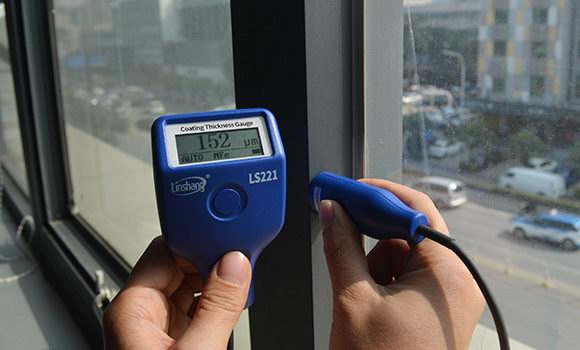Linshang Coating Thickness Gauge Test Non-stick Cooking
Compared with traditional pots and pans, the advantages of non-stick cookings are extremely outstanding. It can be "non-sticky" with the coating on the surface. The coating thickness is inseparable from the actual performance of the non-stick cooking. Manufacturers often use coating thickness gauges to complete the measurement.
The extremely popular non-stick cooking surface coating on the market is made of a composite material. This composite material is low in cost and rich in nature. It has been used for cooking and frying eggs for a long time and is non-toxic and harmless to the human body. The coating on the surface of this non-stick cooking has a certain thickness and has strong chemical stability, which can effectively prevent the acid and alkali substances from corroding. For housewives, the surface coating of the non-stick cooking is very smooth and highly uniform, not only looks neat and translucent, but also simple and convenient to clean, saving time and effort.
Although there are many advantages of the non-stick cooking, these advantages are often linked to the surface coating thickness of the non-stick cooking. Both too thick and too thin coatings are not up to the standard. Generally speaking, the coating that meets the standard thickness can maximize the protection and aesthetic effect. The coating can effectively isolate the acid, alkali, impurities, oxygen and moisture in the air, then the pot's use time will be extended accordingly.
From the actual situation, the surface coating thickness of the non-stick cooking will become thin and brittle after a period of scrubbing and friction. The coating is easy to peel off. The coating thickness is too low, which often leads to the disappearance of the protective effect. Some of the peeled coating will even enter the human body with the food. Although the coating can be completely discharged from the body, it also greatly affects the appearance and consumption of dishes. So, the thicker the surface coating of the non-stick cooking, the better? the answer is negative. We can't just increase the coating thickness in order to prolong the service life. This non-stick cooking will seriously affect the cooking effect and cooking experience. And the thickness of the overly thick coating is easy to crack, which is not conducive to protecting the internal metal structure. It is worth noting that the reason why the surface coating of some inferior non-stick cookings is not smooth enough is because the coating is not uniformly sprayed. And the thickness of the parts is not consistent. This situation not only greatly affects the appearance, but also easily peels.
The high-quality non-stick cookings on the market are all dense and low-density coatings, which seem to have a strong sense of gloss. The ability to refract light is also excellent and the spatula will not have a significant sense of inhibition during daily use. Long-term use can better prevent the intrusion of external chemicals and the coating is not easily damaged. Such standard thickness coatings generally require accurate detection by coating thickness gauges.
LS221 Coating thickness gauge
The indispensable testing equipment for non-stick cooking manufacturers is the coating thickness gauge, which can non-destructively measure the coating of non-stick cooking from the surface . Generally speaking, the surface coating thickness of the non-stick cooking is greater than 25 microns. The measurement unit of coating thickness gauge is micron level, which can display data accurately. We often use the coating thickness gauge designed and developed by Linshang Technology, which ensures basic accuracy and is also easy to carry.
- High precision coating thickness gauge for used car
- Automotive paint protection films coating thickness gauge
- Plating Thickness Measuring Instrument for Detecting Anti-corrosion Coating
- Linshang LS220, LS191, LS160A– Necessary for Car Cover Inspection
- Coating Thickness Gauge for Second Hand Vehicle
- Zero Adjustment Step of Coating Thickness Gauge
